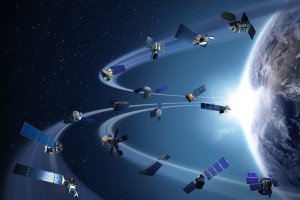Global warming, one small term posing one of the biggest environmental threats to ever occur, and hence it is no shame that every scientific agency is doing all it can to trace its progress and figure out ways to culminate it. NASA being one of the worlds best Space and Aeronautics Agency, is no way behind on this important mission. That is why on Wednesday we saw the horizon lit up with a rocket that was carrying a satellite designed specifically to track the traces of carbon dioxide (one of the most important agents behind global warming) in the atmosphere.
What it Means
The aforementioned rocket is named Delta 2, and it left the earth at 2:56 a.m. from the state of California. The satellite that it was carrying was released in the lower earth orbit around 3:52 a.m. The satellite for this mission has been officially named Orbiting Carbon Observatory-2. There was much unease going around because the team had suffered the loss of one such similar satellite some five years ago. The project manager of this mission, Ralph Bassilio described the launch as “a perfect ride into space.” In a conference for media that was held after the launch. Ralph elaborated on the pre-checks informing that before the launch communication was set up from both ways and pre-flight checks showed that the rocket was all set to take a flight. The launch was originally scheduled for Tuesday, but there was a delay due to failure in the equipment at ground level just forty-six seconds before the flight in the morning.
Some background
The last time NASA tried to launch something similar was in 2009 when the spacecraft that was prepared by NASA for tracing the ruminants of carbon dioxide in the atmosphere from all the pollution created by vehicles and factories crashed into Antarctica because a hardware failed in it. The spacecraft was named Taurus XL.

This was a huge loss considering the amount of money and effort that went into it, but NASA took the set back gracefully. It geared up to spend more years in preparing a spacecraft that was identical to the previous one just with the faults removed and features improved. The mission of the both the space crafts was similar, to observe the level of carbon dioxide contamination from high above the earth, at an approximate height of 438 miles. The current satellite that is OCO-2 is equipped enough that its orbit will enable it to cover almost 80% of the surface of the earth.
It is no news that carbon dioxide contamination is taking a toll on the environment quicker than any other environment-harming agents, the pollution level is increasing despite all the efforts from governments, cars and motorbikes are still furiously contributing it and factories are no behind on the agenda either. An estimated 400 billion ton of the harmful gas is released in the environment by vehicles and factories alone.
This mission has cost the government a hefty amount of $468 million. The satellite has been designed in a sturdy way so as to last at least for 2 years. The whole mission is dedicated to observe how the carbon dioxide present in the environment is being soaked up. The mission turned out to be more expensive because of the high-tech parts that had to be brought in by the engineers.
The launch has placed the satellite about 429 miles high in the atmosphere. The size of it is no more than a booth of telephone but has the capability of expanding the solar arrays as far as 30 feet.
The satellite is designated to be taken much higher in the atmosphere after which the parts will be checked so as to ensure that the readings are correct.